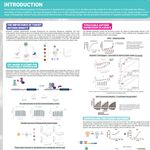Several age-related neurodegenerative disorders are characterized by the deposition of aberrantly folded proteins. The histopathological hallmark of synucleinopathies is the deposition of ɑ-synuclein (ɑSyn) protein in the central and peripheral nervous system. The functional and pathological role of ɑSyn protein aggregates in these progressive brain disorders, which includes different types of Lewy body diseases (LBDs), such as Parkinson’s disease (PD), multiple system atrophy (MSA), and dementia with Lewy bodies (DLB) have been actively investigated. Even though the pleomorphic nature of these syndromes might suggest different underlying causes, ɑSyn appears to play an important role in this heterogeneous group of diseases. An attractive hypothesis is that different types of ɑSyn protein assemblies have a unique and causative role in distinct synucleinopathies. The recent research progress will be discussed on ɑSyn assemblies involved in PD, MSA and DLB, their behavior as strains, the role of the host environment and their implication for disease pathogenesis.
Learning Objectives:
1. Define the role of synuclein protein strains in synucleinopathies
2. Explain the importance of the strain environment in disease progression
3. Understand the relevance of synucleinpathy animal models to human disease




